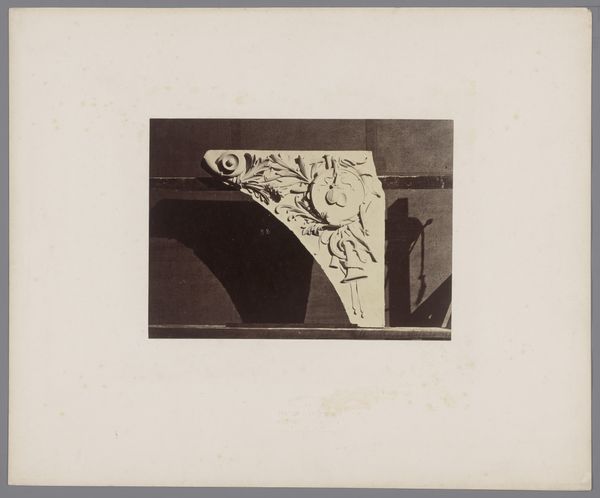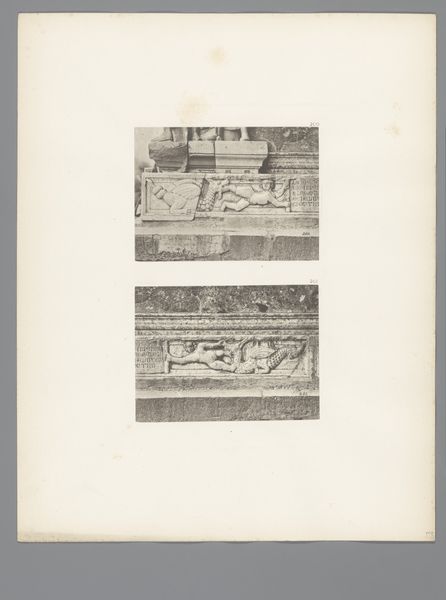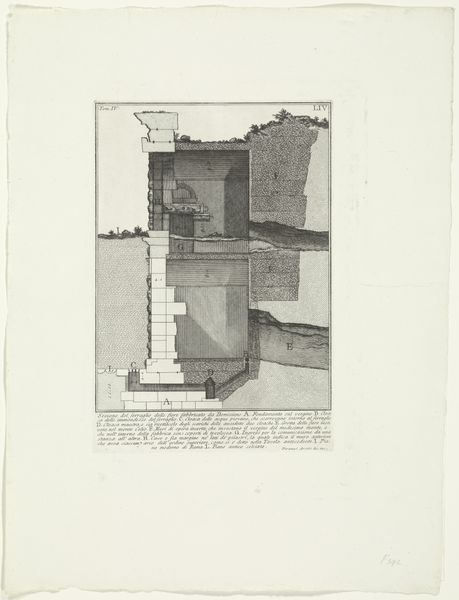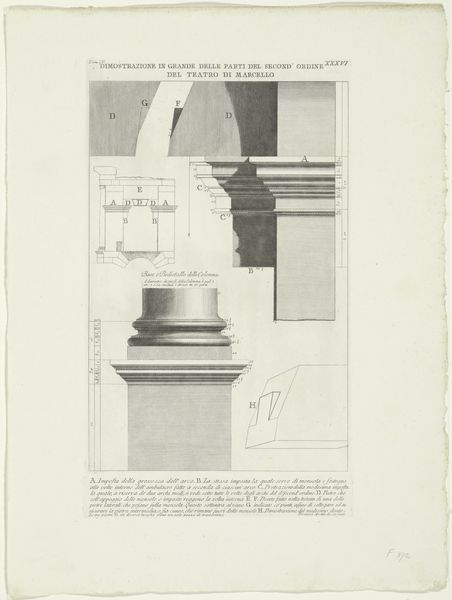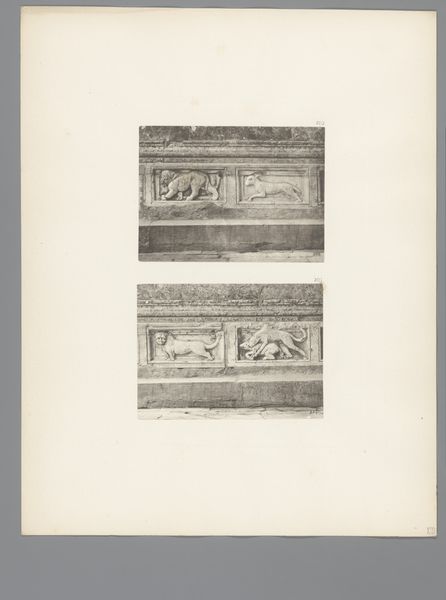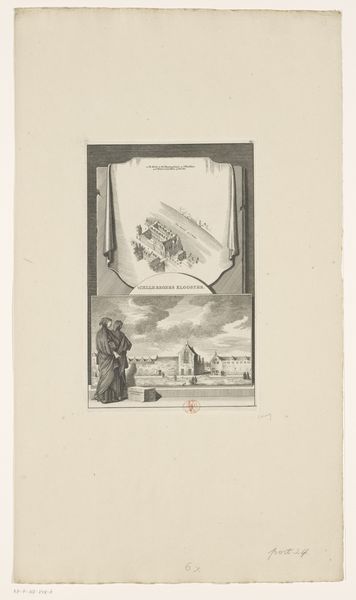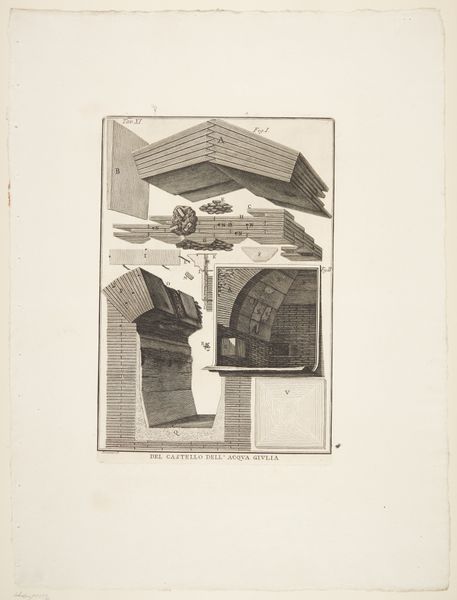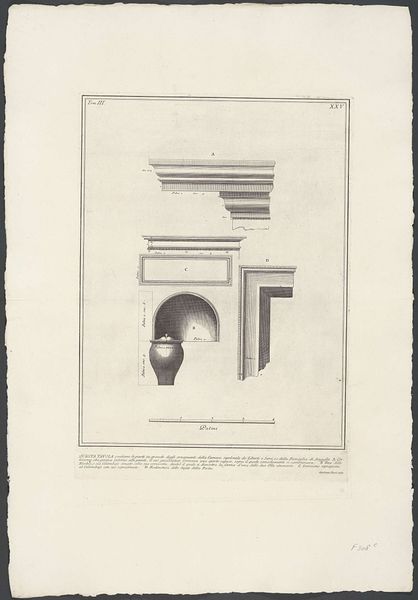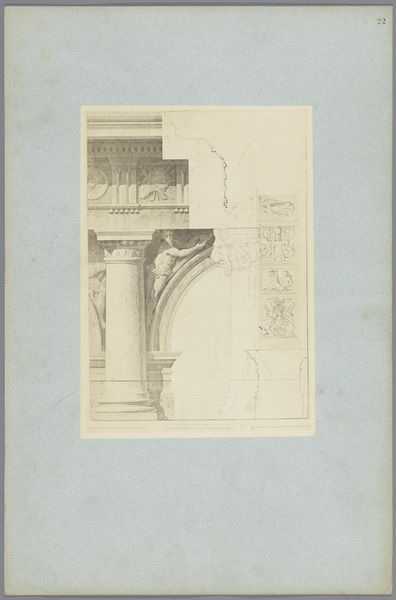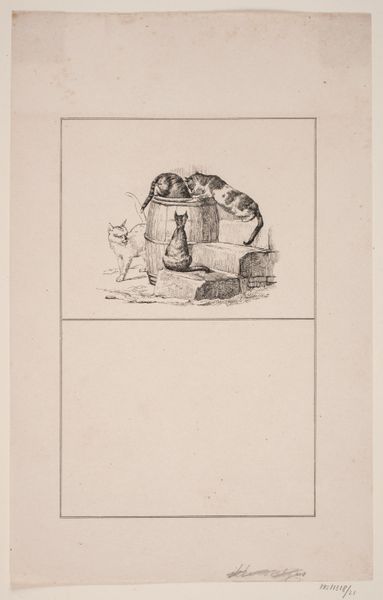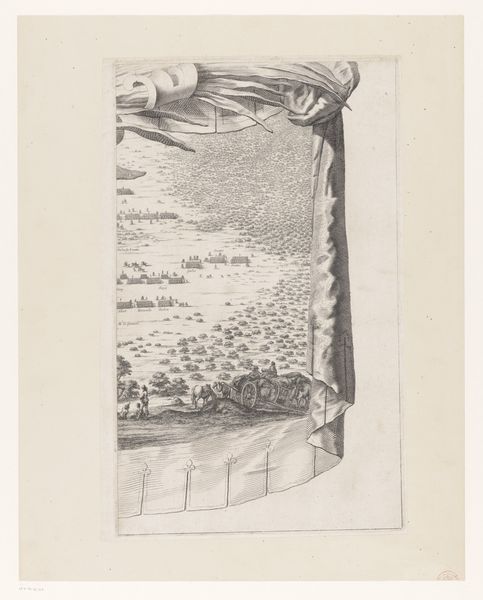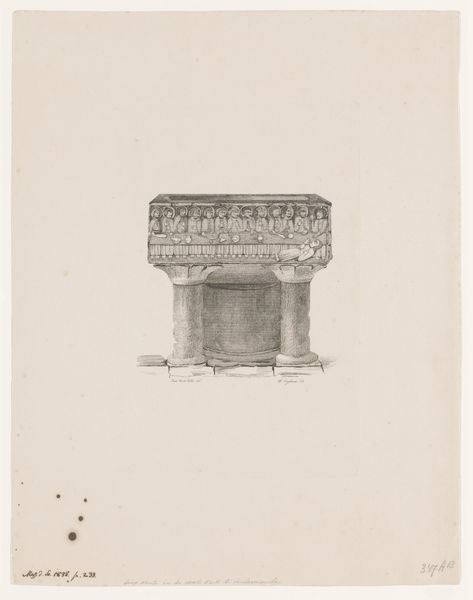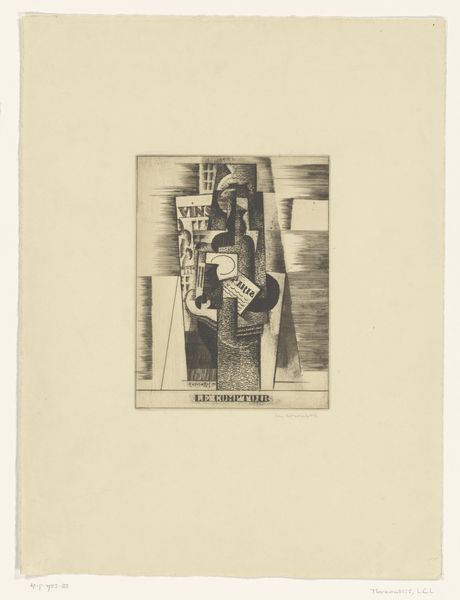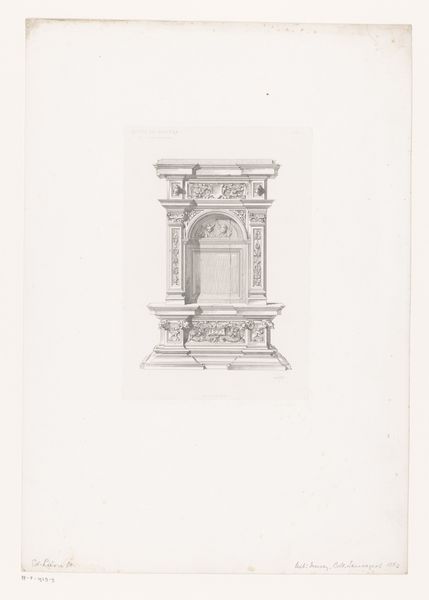
Detail of Porta S. Lorenza showing entablature and partial inscription 1761
0:00
0:00
print, etching, engraving, architecture
#
neoclacissism
#
ink paper printed
# print
#
etching
#
classical-realism
#
geometric
#
line
#
engraving
#
architecture
Dimensions: 593 mm (height) x 445 mm (width) (bladmaal), 340 mm (height) x 235 mm (width) (plademaal)
Editor: Here we have Giovanni Battista Piranesi’s "Detail of Porta S. Lorenza showing entablature and partial inscription," an etching from 1761. It looks almost like an architectural diagram, a series of stone fragments meticulously rendered. How would you interpret this work? Curator: Focusing on its intrinsic qualities, the print reveals a fascinating study in line and form. Notice the intricate rendering of architectural elements: cornices, inscriptions, blocks of stone. Piranesi masterfully uses hatching and cross-hatching to define depth and texture, creating a play of light and shadow across the surface. The fragmented nature of the depiction – the "partial inscription," as you mentioned – draws our attention to the composition's internal structure. How do these individual parts relate to the whole? Editor: They seem almost suspended, unrelated to each other, more like samples. Does that fragmenting speak to a particular design approach? Curator: Precisely. Consider the emphasis on individual components over the unified structure. This strategy draws our attention to the abstract qualities of geometric form. We may think we recognize architectural vocabulary but they are displayed without purpose. Note also how the clarity of line contrasts with the ruinous subject matter. Is this contradiction itself meaningful? Editor: That’s interesting – this tension elevates simple observation to commentary! Curator: Indeed, it suggests a visual problem concerning structure and decay itself becomes the object of our gaze. And note finally the overall effect: one of intellectual precision imposed upon visual chaos. Editor: Seeing how line, form and composition are working together, I understand how to perceive architecture as form as well as function. Thanks! Curator: A keen observation! Recognizing how the structural and decorative intersect gives rise to more questions about representation itself.
Comments
No comments
Be the first to comment and join the conversation on the ultimate creative platform.
